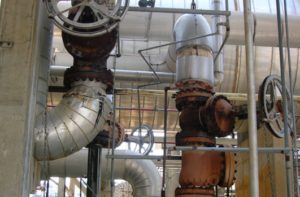ACA holds Corrosion Under Insulation workshop
The economic impact of corrosion and its degradation of infrastructure and assets is estimated to be 3 to 5 per cent of GDP, which for the New Zealand economy is more than $10B annually.
Companies require effectively trained staff who have an understanding of the numerous types of corrosion that affect their industry, the impact of dangerous and expensive damage that corrosion causes to structures such as pipelines, towers, bridges, oil rigs, buildings, water systems, and the preventative and remediation technology available.
The Australasian Corrosion Association (ACA) regularly hosts special technical events for members and others working in the corrosion management and prevention sector, designed to provide attendees with information and guidance about ways to combat and manage corrosion.
As part of this program, the ACA ran a two day Corrosion Under Insulation (CUI) workshop in New Plymouth at the end of last month. Presented by internationally renowned CUI consultant Peter Bock from Houston, USA, the workshop was dedicated to the design, specification and inspection of corrosion control systems to prevent CUI in new or aged equipment.
Topics covered included causes of CUI, current state-of-the-art CUI coating systems, inspecting and evaluating aged CUI in the field, as well as suitable CUI repair coating systems.
Bock has more than thirty years’ experience in elevated temperature coatings and CUI, and has published numerous articles on CUI issues.
In addition, he has spoken at NACE, SSPC, ICC and other national and international conferences regarding CUI problems and solutions.
Allied to this as CUI has an impact on durability, the ACA hosted a one-day seminar entitled ‘Designing for Durability in the Built Environment’ in July, in Parnell.. The seminar covered a range of topics including Fastener Durability in Timber Structures, the Role of Stainless Steels in Architecture and Using Metal as a Cladding Material.
Participants gained the knowledge and tools to offer the most effective solutions—implementing and promoting durability planning.
The New Zealand Building Code (NZBC) sets the performance standards to which all structures are required to comply. The main purpose of the NZBC is to ensure structures are safe, healthy and durable for everyone who may use them.
The B1 Structures clause of the code clearly states how engineers, and users, can work toward ensuring compliance. A rigorous peer review process is an integral part of the design.
Some in the industry feel that there are limitations within the B2 Durability clause of the NZBC. This has led to misunderstandings on achieving compliance, especially in regards to Acceptable Solutions or using the Verification Methods for some construction materials.



